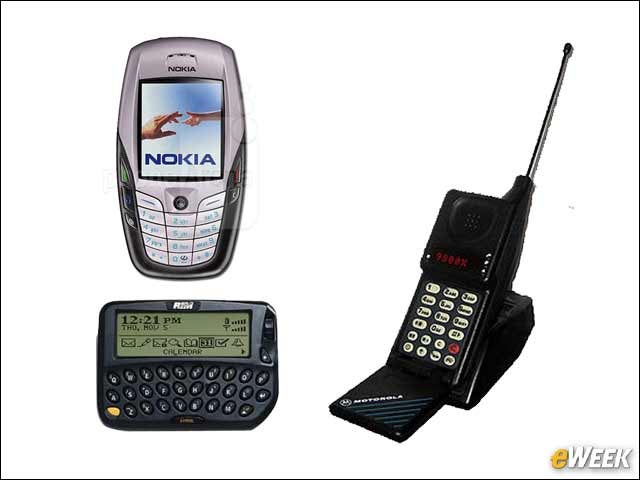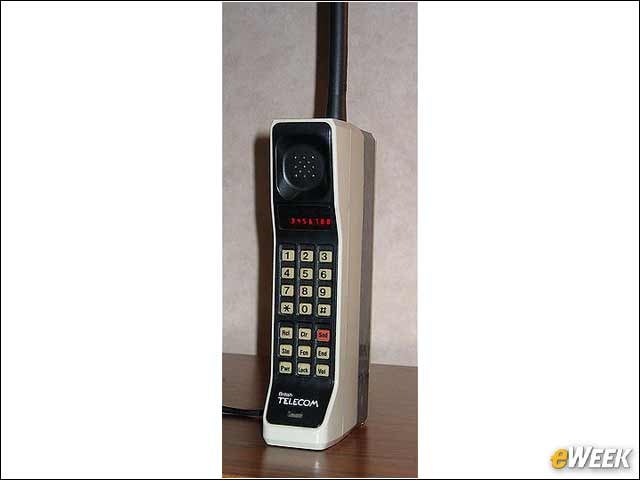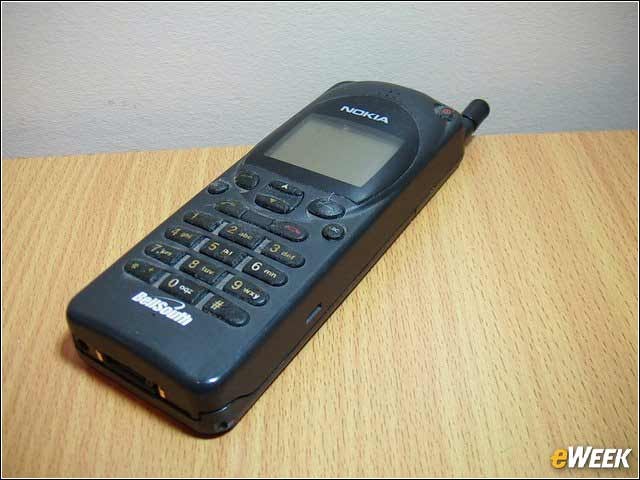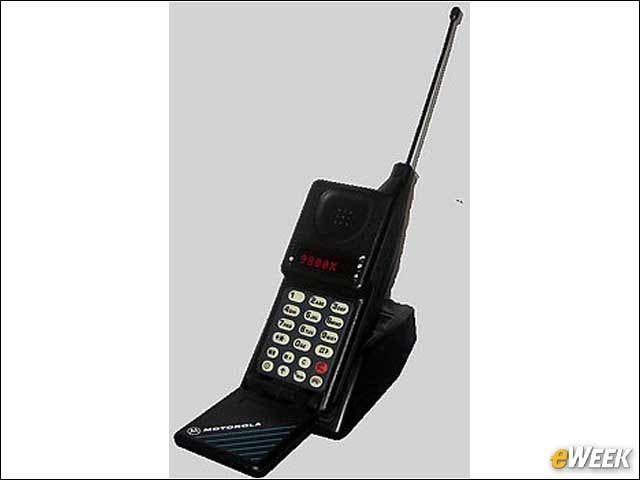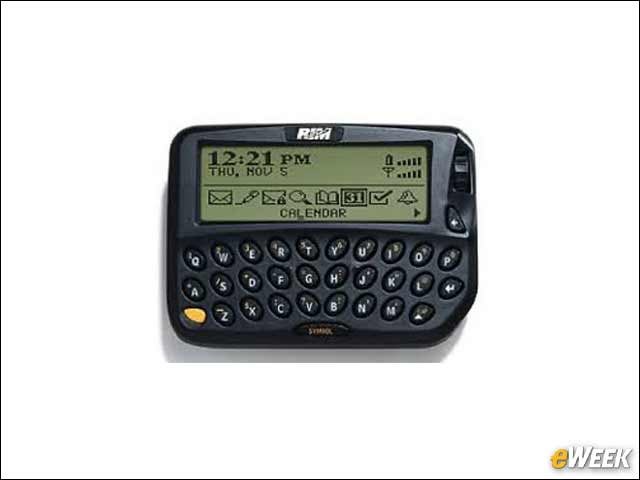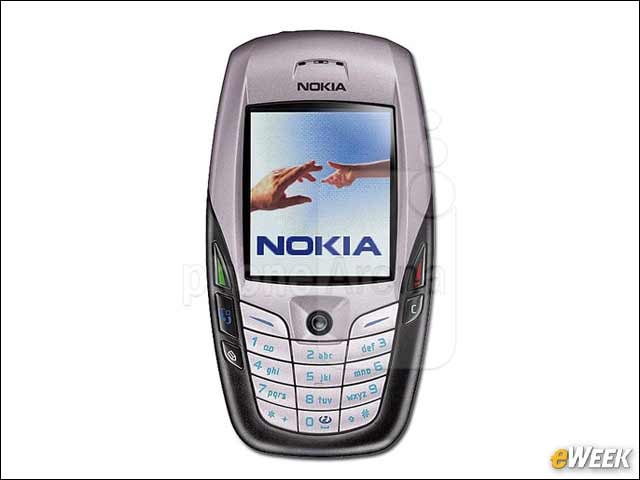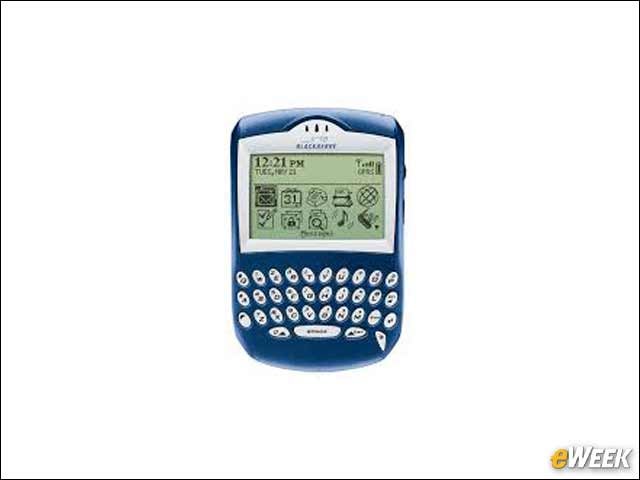eWEEK content and product recommendations are editorially independent. We may make money when you click on links to our partners. Learn More.
21983: Motorola DynaTAC 8000X
In 1974, a Motorola engineer made the first-ever mobile phone call. (He, of course, called the rival company racing to the accomplishment, to say he’d won.) Nine years later, Motorola introduced the DynaTAC 8000X, a phone that soon became synonymous with “Wall Street’s” Gordon Gekko (Michael Douglas) calling Bud Fox (Charlie Sheen) to say, “This is your wake-up call, pal.”
31994: Nokia 2100 Series
Far more pocketable was the Nokia 2100 series. Nokia hoped to sell 400,000 of them; instead, it sold 20 million. The 2100 series also transformed a clip of Spanish classical composer Francisco Tarrega’s 19th century guitar piece “Gran Vals” into what the world came to recognize as “the Nokia ring.” Nokia estimates that “Gran Vals” is now “one of the most frequently played pieces of music in the world.”
41996: Motorola StarTAC 9800X
Motorola slimmed down and updated the DynaTAC and introduced first a series of MicroTAC phones—the world’s first clamshell phones—and then StarTAC phones. These tiny clamshell devices, or flip phones, introduced vibration as a way to notify a user of a new call or message. It’s estimated that 60 million StarTAC phones were sold.
51996: Nokia 9000 Communicator
Nokia wowed the world with the 9000 Communicator. Its exterior featured a small display and a traditional keypad, but then the phone could be split open to reveal a full QWERTY keypad and a display nearly as long as the phone. In 1996, the Communicator looked shockingly, wonderfully and awe inspiringly futuristic.
61999: Research In Motion BlackBerry 850
72000: Nokia Communicator 9210
In 2000, Nokia upgraded the Communicator. It gave its 9210 an ARM processor and the Symbian mobile operating system, making it Nokia’s first true smartphone. The 9210 could access the Web, desk applications and email, and included a calendar, a presentation viewer and the ability to download third-party software. MP3 music player software was optional.
82003: Nokia 6600
Nokia was able to surge ahead of Motorola by offering a dynamic portfolio. In 2003, for example, it introduced both the 1100, an inexpensive phone for developing markets (which it ultimately sold 200 million units of) and the Nokia 6600, a Symbian-running smartphone with a Web browser, a VGA camera, a multimedia card expansion slot, a RealOne music player, Bluetooth and more.
92003: Research In Motion BlackBerry 6210
The BlackBerry 6210 was Research In Motion’s 10th device but its first with a fully integrated phone. (Its predecessor had a phone but no speaker and had to be used with a headset.) An upgrade shortly afterward added a color display. “Before the iPhone … you were nobody if you didn’t have a BlackBerry,” said analyst Jack Gold, with J. Gold Associates.
102004: Motorola Razr V3
The tremendous success of the Razr—which was significantly skinnier and more attractive than anything on market—makes clear that in 2004, despite the technology being available, the great majority of Americans were not yet buying smartphones. Over four years, Motorola sold 130 million Razrs. While at its debut the Razr V3 cost $500, by 2007, after the iPhone was introduced, it was possible to buy a Razr for $30 with a two-year service contract.
112007: Apple iPhone
Apple introduced the iPhone by calling it a “widescreen iPod with touch controls, and a breakthrough Internet communications device with desktop-class email, Web browsing, searching and maps.” Most importantly, the iPhone uniquely featured a large, multi-touch display. Apple didn’t invent the smartphone, but by making it easy and intuitive to use, it changed how smartphones were used, who used them and what people expect when they pick up a mobile phone.
